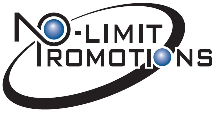
The Minnesota State Fair is just around the corner and we have got 6 marketing tips YOU can use today. This 12 day event features fried you-name-it on-a-stick, butter sculptures, farm animals, concerts and some of the best people watching of all time. The fair draws almost two million people from across the state and around the country. Part of their success is built on 152 years of tradition. The other part is marketing expertise.
You may not have 152 years of tradition to rely on, but you can borrow some of that deep fried marketing expertise to get customers and prospects to engage.
1. Something for Everyone. Some people go for the food. Others go to see the animals or exhibit halls. The concert lineup is a diverse mix of artists from several genres. Some events are specifically geared towards kids and others are clearly toward adults. The fair knows it has a diverse audience a finds ways to appeal to each segment.
Smart marketers have a well-defined target audience that they appeal to. But, are there secondary target audiences that need to be considered? Find ways to enhance the experience for that secondary audience too.
2. Consistency. The first time I went to the fair, I took an entire day and saw everything. I went again the next year and was a little disappointed to find that everything was exactly the same. But, I have observed that when people talk about the fair, they talk about all of the favorite places that they visit year after year. I get it now!
A consistent experience builds a brand. Customers want to know what to expect each time they engage your business. The more comfortable and familiar your brand is to them the more loyal they become.
3. Be a Little Strange. Leading up to the state fair, everyone talks about the new, strange fair food item for the year. This year’s most talked about food item is the fried butter on-a-stick – unfortunately it doesn’t sound like it’s going to make its way up Minnesota this year (we’ll see). These food items defy logic and good health, but generate a ton of buzz before, during and after the fair.
Do something different to grab attention and create a buzz about your brand. Outside of the box ideas can’t be copied by a competitor. What brand quirk or differentiator can get people talking about you?
4. Make it an Event. The fair is one of the largest events of the summer in Minnesota. People begin talking about it months before it starts. Vacations are planned around it. There is a five year waiting list for campsites around the fairgrounds. You get the point.
Can you create an event to get customers or the community excited? It could be a new product launch, supporting a cause, customer appreciation or just for fun. Do it every year and it becomes something to look forward to.
5. Have a Contest. Competitions for State Fair ribbons are taken very seriously. Competitions with cash rewards can be cutthroat. People spend an entire year gearing up for the competition of their choice. This is their Super Bowl. It’s an important part of their fair experience.
Build brand loyalty by rewarding achievements of your customers. This can be as big as a customer loyalty program or as simple a coloring contest for the kids.
6. Easy Access. Parking at the fair is at a premium and if you choose the free Park & Ride option you better be patient and plan on an extra 30 minutes (each way) for the commute. The MTC has also partnered with the Great Minnesota Get Together and offers discounted parking with express bus service from 17 Twin Cities locations. A much better option if you’re looking to save a little cash and get in and out with ease.
Find ways to make it easier for customers to access your product or service. You may need to bundle with other businesses to ease a pain point. The less annoyed customers are when they engage your brand, the better chance of building a loyal following.
If you happen to be in the Twin Cities over the next week and half and are looking for something to do, I’d recommend the Minnesota State Fair. It’s a good time for all and a case study in good marketing.






